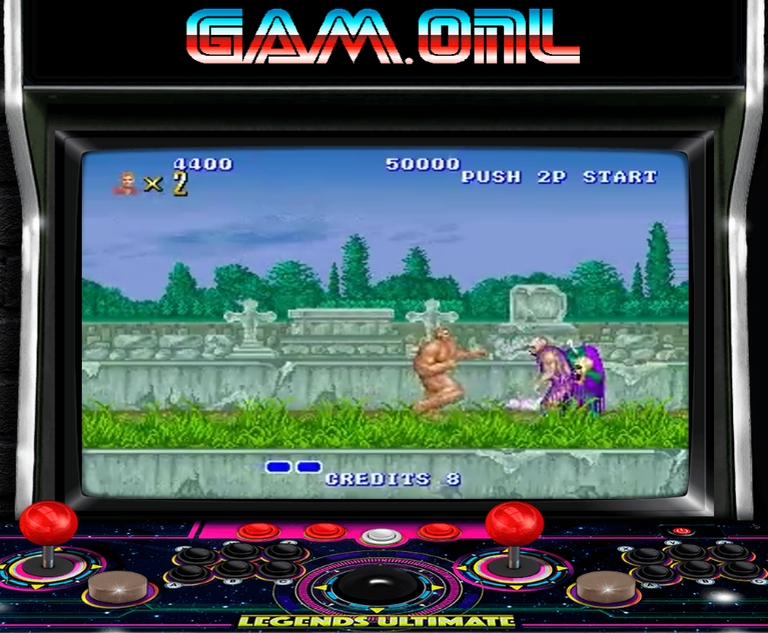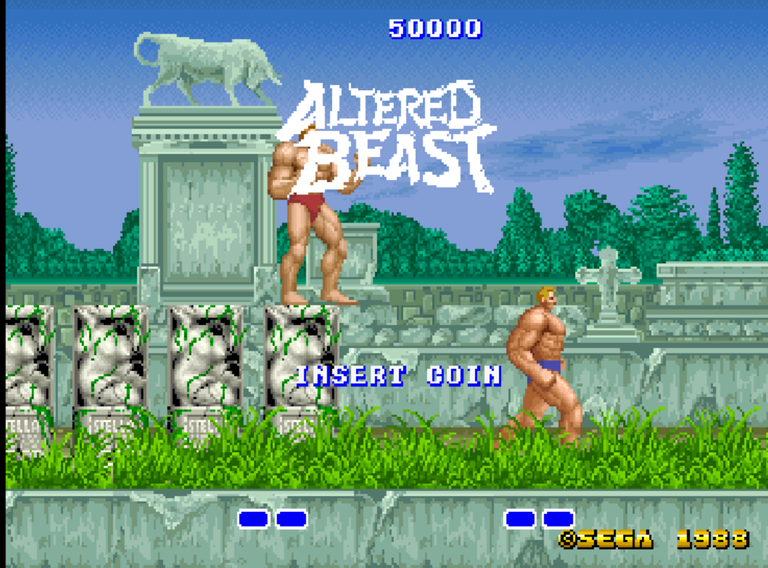Altered Beast: The Beat 'em Up That Resurrected with Force

Good afternoon, retro game fans like myself. Today I'm going to talk about one of the greats of the creative world, and I'm talking about Sega's great game Altered Beast. Released in 1988 for the arcade and later adapted for the Sega Mega Drive, it was developed under the direction of Makoto Ushida, to whom we also owe the iconic Golden AX saga, with a concept that blends action and Greek mythology, as well as iconic transformations, of course.
With a simple but captivating plot, the game puts us in the shoes of a warrior resurrected by Zeus himself to save his daughter Athena from the clutches of the malevolent sorcerer Neph. Since its release, Alter Beast has attracted attention for its dark atmosphere and mythologically influenced aesthetics, despite its somewhat rough gameplay.
Compared to other titles of the time, it stood out for its striking beast transformation mechanic, a feature that was not originally planned in the game's design. In the initial concept, the protagonist would only achieve a more muscular version of himself after collecting the orbs of power, without becoming the iconic creatures we associate with the title today. However, the inclusion of these transformations added a key differentiating element to its success. Another interesting aspect of the development is that the implementation of pressure-sensitive buttons was considered, an idea similar to the one used in The first Street Fighter game where the strength of the blows varied depending on the intensity with which the buttons were pressed. However, this innovation never made it into the final version of the game, probably due to technical limitations or the difficulty of adapting to the arcade controls of the time.

Regarding its reception, Alter Beast was moderately successful in Japan, but became a true phenomenon in the West, especially due to its inclusion as a launch game alongside the Sega Genesis in the United States. Its iconic opening became etched in gamers' memories and became a symbol of the 16-bit era, despite its flaws, such as a relatively short playtime and controls that could feel somewhat stiff.

It earned a place in the hearts of many arcade fans. The home console conversions didn't always capture the essence of the arcade versions. In the case of the Mega Drive, some adjustments were made to the graphics and sound, although a cheat was included that allowed players to freely choose the beast transformation regardless of the level they were on. This was a small nod from the programmers that gave the title more replayability. Speaking of sound, the arcade version stood out for its use of digitized voices, a rarity at the time, although the quality left much to be desired due to hardware limitations. However, this didn't prevent the phrase from becoming iconic among gamers in terms of sequels and remakes. Alter Beast never had a direct sequel in arcades, but it did receive some attempts to revive the franchise. In 2002, a remake was released for the Game Boy Advance that attempted to improve the game.

In terms of gameplay and more detailed graphics, a PlayStation 2 version was released in 2005 with 3D graphics and a darker tone, including more Gor and new transformations. However, this installment had no plot connection to the original game and was poorly received by critics. Curiously, this remake was never officially released in the United States, which is rather strange considering Alter Beast's popularity in the West. The important thing is that Alter Beast's legacy lives on in the memories of gamers and in the history of video games, proving that despite its limitations, it remains an iconic title from Sega's golden age. But now I'm interested in hearing your opinion. Did you play any of its versions? Were you a fan of transformations? Let's go. Tell me, I'll read you in the comments.


Wow what a time travel with this game; I played it on the Sega Genesis, I didn't know there was a modern version for Playstation 2, it certainly must have been pretty obscure. I played this game before in the arcades, but I confess that for the time it disturbed me a little, however I kept playing it. Sega has had many iconic games and when they were transferred to consoles they lost a bit of quality, as happened with the SNES for example. A game that I loved and that you mention in the post is Golden Axe, too epic without a doubt 🔥🔥🔥... Cheers, it was great to read you 🤘.... You Rockkk!!! 👍😎🔥🎮❤️
Thank you very much, I hope to see you more on my blog.
https://www.reddit.com/user/ImportantEngineer378/comments/1ktlba6/altered_beast_the_beat_em_up_that_resurrected/?utm_source=share&utm_medium=web3x&utm_name=web3xcss&utm_term=1&utm_content=share_button
https://x.com/wizloge/status/1925925850739818533
Congratulations @wizloge! You have completed the following achievement on the Hive blockchain And have been rewarded with New badge(s)
Your next target is to reach 100 upvotes.
You can view your badges on your board and compare yourself to others in the Ranking
If you no longer want to receive notifications, reply to this comment with the word
STOPwhat good memories with Altered Beast, I remember how much I played it as a kid in an old emulator, although I never got beyond the second level hahahahaha. I didn't know that after the Sega Genesis title it had other more modern versions.
if it is also censored
This was my first 16-bit game because it came with the Sega Genesis. It was pretty damn impressive at the time but honestly, it wasn't a great game and was quite repetitive. We let that slide because those graphics and the fact that the game talked to you - "welcome to your doom!"- was just so epic.